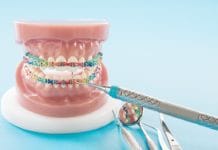The dental hygiene profession can be self-satisfying, rewarding, educating, and humbling, as well as trifling, mentally and physically exhausting, and perplexing. Judging from recent dental hygiene blogs, it seems that the majority of practicing dental hygienists have encountered similar reactions, both positive and negative, in their work environments.
Dental hygienists juggle the emotional rollercoaster of patients, fellow employees, doctors, professional legalities, and their home lives. Although we seem alone in our emotional bubbles, the similar stories of others via the internet have allowed us an outlet to embrace one another and share our experiences. The stories that we share can be uplifting, spiritual, educational, and heartwarming.
The Work Environment
The dynamics of a work environment can be guided by many factors, such as the number of practicing doctors, the socio-economic status of the area, the availability of adequate equipment, and the office flow. Over the years, the settings for dental practices have continually evolved.
Although the goal of a dental hygienist should be constant based on due diligence and standard of care, there are many instances, both positive and negative, that can affect these basic practices. Many stories shared on dental hygiene blogs complain of old and inadequate instruments, inadequate time allowed for each patient, and lack of supplies. However, in some offices the equipment is state of the art, the dental hygienists (not the dentists) allocate the time needed with each individual patient, instruments are ordered on an as-needed basis, and supplies are available upon request.
At times, the misconception that dentists will not spend the money for new instruments is the underlying reason for hygienists not requesting them. However, from the doctors’ perspective, the need for new instruments is necessary if the hygienists are to achieve peak performance in their work and thus assure that patients are receiving the highest quality of care.
The Doctor
Whether working in a single or multi-doctor practice, adapting to the dentists’ personality and scope of practice is imperative to a successful patient appointment. Doctors typically are held at higher regard by their patients, even though the dental hygienists spend more appointment time with the patients. The display of respect and professionalism, however, is important in gaining the trust of both the doctor and the patient.
The dental hygienist’s efforts to gain the respect of the doctor can be a daunting task. But it is necessary for a healthy working environment. Therefore, relaying important information about the patient when the doctor arrives for the exam is the first step to bridging any communication gaps. This will also assure patients that their providers are thorough and that their needs are being met.
The Staff
Every office has a unique dynamic that paves the way for a positive or a negative work atmosphere. Every staff member has a different role in satisfying the expectations that the patients’ needs are being met. Personality conflicts resulting from a lack of humility, aggressive personalities, passive personalities, and arrogance, however, can derail the workflow and interfere with patients’ needs.
The understanding that comes with “walking in someone else’s shoes” is imperative to maintaining a positive work environment. The knowledge of the work tasks performed by a fellow employee can help improve relations. All employees work on the assumption that they know their jobs and work to peak performance. However, others may disagree with these self-assessments. Hygienists adopting a helpful and humble role will not only ensure better relations with fellow employees but will also improve the office workflow.
Dental hygienists must maintain professionalism, not only with their doctors and patients but also with their fellow employees. Although dental hygienists may not associate positively with all colleagues, displaying respect for the job they perform is imperative in helping to build positive relations. The act of giving respect may, in return, earn respect.
The Patient
The dental hygiene patient is the factor that impacts the hygienist the most on a daily basis. The patient can be timid, aggressive, comical, difficult, and sincere. The patient-dental hygienist relationship is a “hot topic” on dental blogs. The most common problems shared by hygienists on blogs are difficulty accessing the patients’ mouths, listening to patients’ demeaning comments during the prophylaxis, patients showing up late to appointments, and failure in building positive dental hygienist-patient relationships.
Although negative appointments seem to generate the most blogs, there are also many positive relationships built between dental hygienists and patients. These relationships are built on trust and respect, and can ultimately be achieved when the hygienists show consideration to their patients’ needs. The unnecessary critical comments by some patients are most likely a result of their apprehension or due to their past experiences in the dental setting. Regaining the trust of their patients can result in a more positive experience for both dental hygienists and patients.
Secondly, communication with patients may help to improve easy access during appointments that are slowed by patients’ tongue-thrusting, limited mouth openings, and other difficulties. Communication can also be a dental hygienist’s downfall. Patients have different likes and dislikes, and the patients who do not want verbal communication throughout their appointment are, at times, more difficult to work on than the patients who talk too much.
The roles of dental hygienists are rewarding, exhilarating, and, at the same time, emotionally and physically taxing. At times, the experiences dental hygienists endure can initiate a feeling of isolation; however, the unity of the dental hygiene community helps in dealing with these feelings of isolation. The shared stories and insightful input by each dental hygienist bridge these gaps and promotes a positive environment to ensure that patients’ needs are being met.












